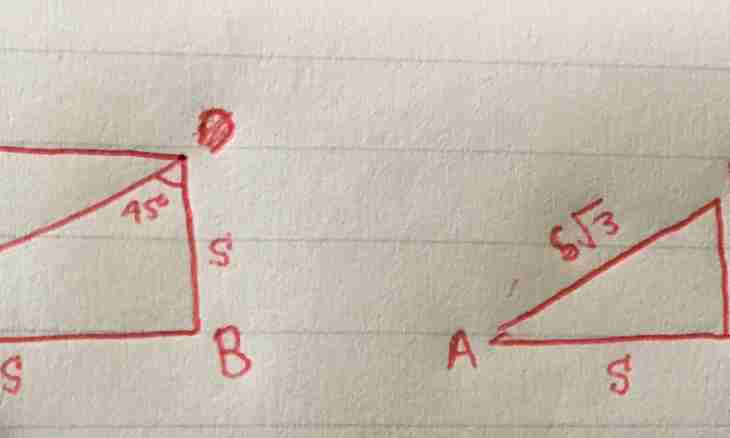Each polyhedron, rectangle and parallelogram has a diagonal. It, as a rule, connects among themselves corners of any of these geometrical figures. The value of diagonal should be found at the solution of tasks in elementary and higher mathematics.
Instruction
1. Diagonal is called any straight line connecting corners of polyhedrons. The order of its stay depends on a type of a figure (rhombus, a square, a parallelogram) and on what data are provided in a task. The easiest way of finding of diagonal of a rectangle is as follows. Two parties of a rectangle of an and b are given. Knowing that all its corners are equal 90 °, and its diagonal is a hypotenuse of two triangles, it is possible to draw a conclusion that the diagonal of this figuta can be found on Pythagorean theorem. In this case, the parties of a rectangle are legs of triangles. From this it follows that the diagonal of a rectangle is equal: d= √ (a^2+b^2) the Special case of application of this way to finding of diagonal is a square. Its diagonal can also be found on Pythagorean theorem, but, considering that all its parties are equal, the diagonal of a square is equal to a√2. Size a is also the party of a square.
2. If the parallelogram is given, then its diagonal is found, as a rule, according to the theorem of cosines. However, in exceptional cases at a preset value of the second diagonal it is possible to find the first of the equation: d1= √ 2 (a^2+b^2)-d2^2Теорема cosines is applicable when the second diagonal is not given, and only the parties and corners are given. It is the generalized Pythagorean theorem. The parallelogram which parties are equal to b and c is Let's say given. Through two opposite corners of a parallelogram there passes a diagonal. As a, b and c form a triangle, it is possible to apply the theorem of cosines according to which diagonal can be calculated: a^2= √ When is given to b^2+c^2-2bc*cosα the area of a parallelogram and one of diagonals and also a corner between two diagonals, diagonal can be calculated in the following way: d2=S/d1*cosαРомбом is called a parallelogram at which all parties are equal. Let it have two parties equal to a, and, diagonal is unknown. Then, knowing the theorem of cosines, diagonal can be calculated on a formula: d=a^2+a^2-2a*a*cosα=2a^2(1-cosα)
3. rectangular trapeze. The rectangular trapeze is Let's say given. At first it is necessary to find a small piece which is a leg of a rectangular triangle. It is equal to the difference of the top and lower bases. As a trapeze rectangular, from the drawing it is visible that height is equal to trapeze side. Thereof, it is possible to find other side of a trapeze. If the top basis and side are known, then according to the theorem of cosines the first diagonal can be found: c^2=a^2+b^2-2ab*cosαВторая diagonal is proceeding from values of the first side and the top basis on Pythagorean theorem. In this case, this diagonal is a hypotenuse of a rectangular triangle.
